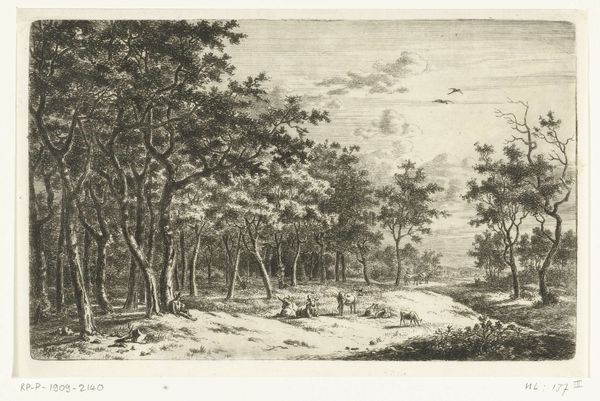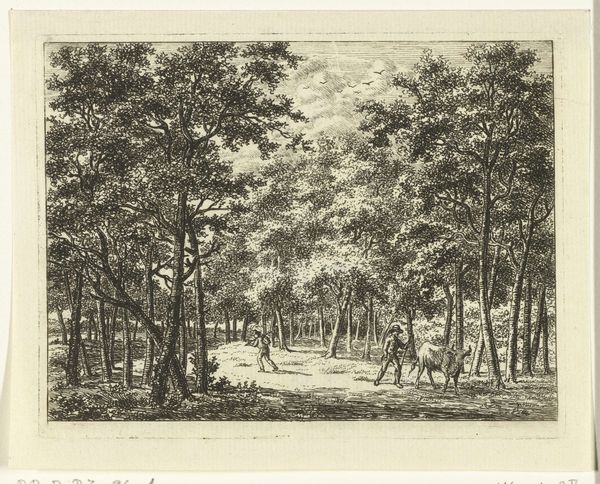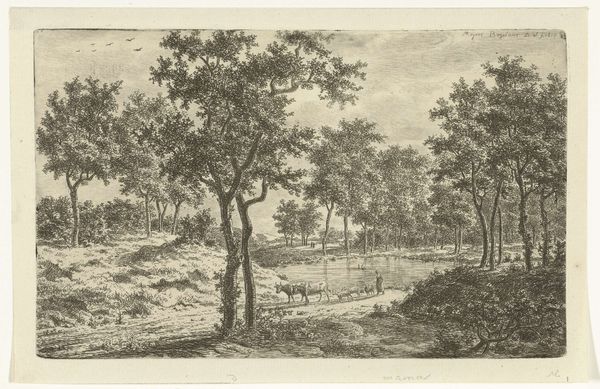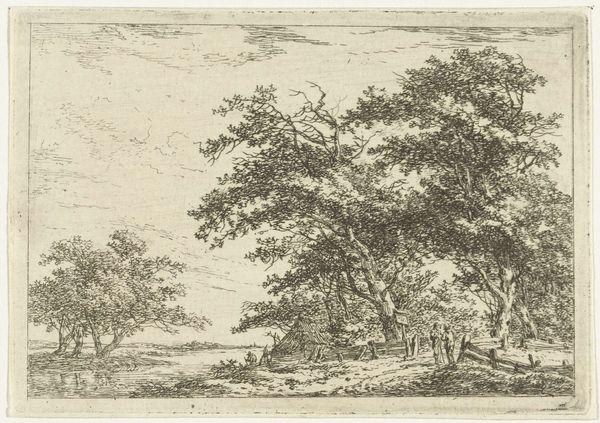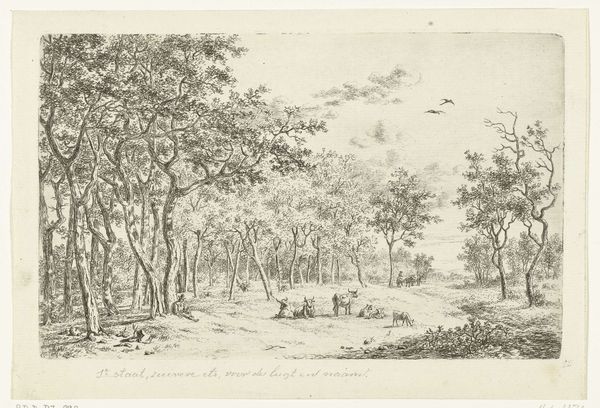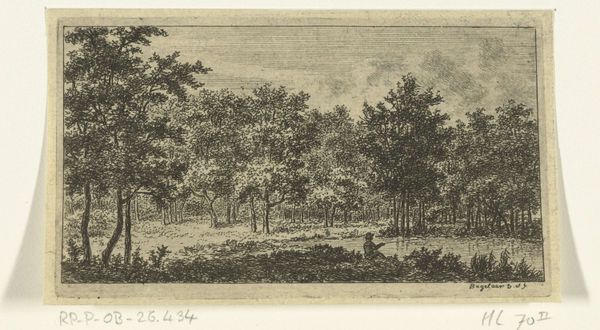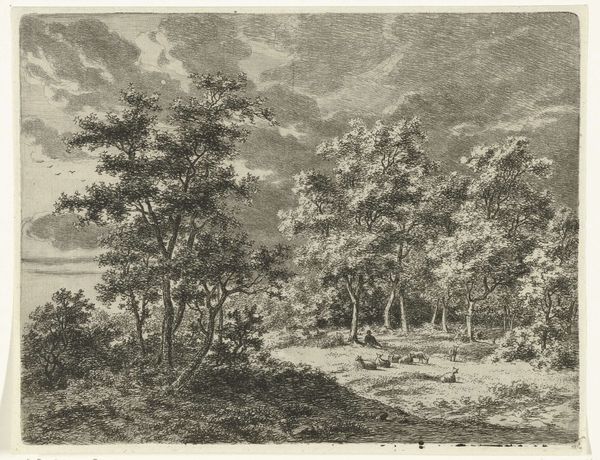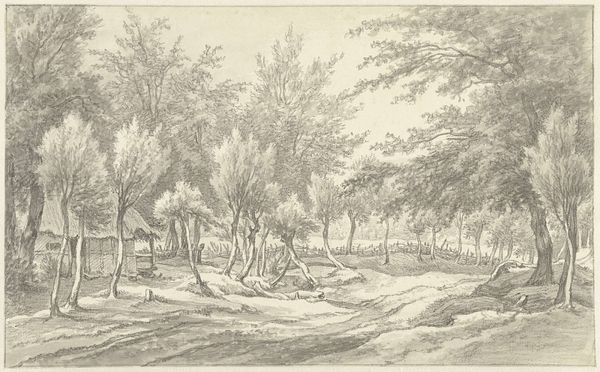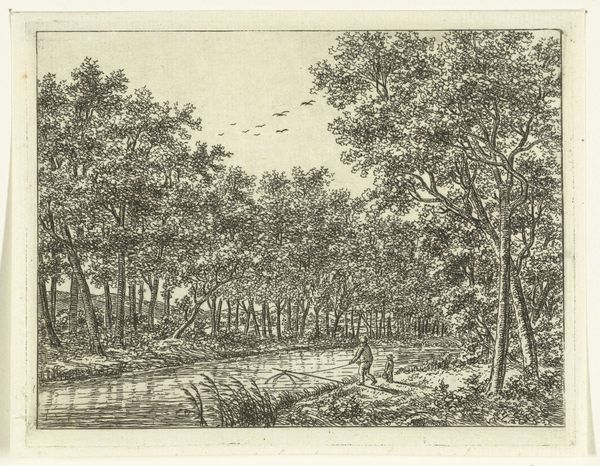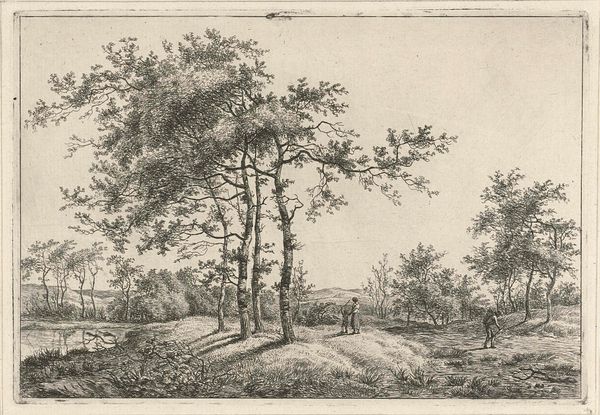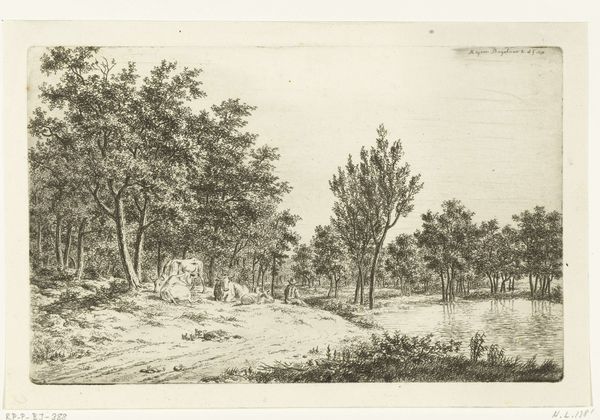
drawing, pencil
#
landscape illustration sketch
#
drawing
#
mechanical pen drawing
#
pen illustration
#
pen sketch
#
pencil sketch
#
landscape
#
personal sketchbook
#
romanticism
#
pen-ink sketch
#
pencil
#
pen work
#
sketchbook drawing
#
storyboard and sketchbook work
#
realism
Dimensions: height 138 mm, width 220 mm
Copyright: Rijks Museum: Open Domain
Curator: Immediately, I'm struck by the calmness evoked by this drawing. It seems to emanate an almost pastoral stillness. Editor: Indeed. What we have here is “Landscape with a Shepherd and His Flock at the Edge of the Forest,” a pen and pencil drawing created in 1821 by Ernst Willem Jan Bagelaar. Curator: The strategic composition, specifically how the grove of trees takes prominence in the left quadrant, juxtaposed with the wide opening, and almost dreamlike distant meadow… it’s so carefully balanced. How do you perceive this work within a historical context? Editor: The drawing gestures towards the burgeoning Romanticism of the time, situating humans as diminutive observers of the grandeur of nature. This era marks a notable societal shift, one influenced by increasingly visible consequences of industrialization and urbanization, inspiring romanticizing, maybe even a return to simpler, agrarian ways of life, if we are being critical. Curator: That resonates deeply when you consider the presence of the shepherd and his animals juxtaposed against the sheer density and volume of the forest. A kind of serene dance unfolds, a dialogue between control and the seemingly uncontrollable. Do you see further interplay of formal components as such, maybe something semiotic that strengthens your interpretation? Editor: Absolutely. The trees are rendered with fine lines and dense hatching, which leads to strong tonal contrasts and varied textures that seem to breathe life into the overall form, if not meaning of the piece. But ultimately it serves a sense of realism while simultaneously pushing against it in a sentimentalized manner. It does not feel inherently critical in its aims, however. Curator: And yet, thinking about class and land ownership at this moment in Dutch history, maybe the choice of landscape itself functions as a coded message, maybe not readily obvious now, that nonetheless is ever-present within it. The forest might signal the unknown, or something wild beyond control, maybe hinting at revolutionary undertones against those very structures. Editor: You present such a compelling case! Considering our differing insights on display here, I realize, again, just how richly ambiguous art objects can be. Curator: Agreed. Perhaps what appears at first glance to be simple harmony also functions as a profound statement on place and time.
Comments
No comments
Be the first to comment and join the conversation on the ultimate creative platform.
